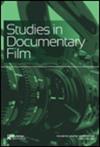南澳大利亚的邂逅湾,南露脊鲸(南露脊鲸科:鲸目)的重要聚集地和繁殖地。
IF 0.8
4区 综合性期刊
Q3 MULTIDISCIPLINARY SCIENCES
Transactions of the Royal Society of South Australia
Pub Date : 2022-01-19
DOI:10.1080/03721426.2021.2018759
引用次数: 3
摘要
濒危的澳大利亚南露脊鲸(Eubalaena australis)极易受到人类活动的威胁,尤其是在产犊聚集区。随着人口的增加,新的产犊区正在建立,这对监测很重要。在南澳大利亚邂逅湾/Lacepede湾地区,通过历史目击(n = 1071, 1970-2013)和照片识别个体(n = 191, 2006-2019)研究了其分布、相对丰度、居住和地点保真度。在4月至11月期间,研究人员在整个研究区域观察到鲸鱼,并集中在偶遇湾,在埃利奥特港和墨累河口之间的近岸核心产犊区被确定。在1983-1997年期间,每天最多可看到2至8头鲸鱼(= 2.9头),而在2002年之后则增加到1至25头鲸鱼(= 8.6头)。确定的雌性小牛对(CC)数量从10对(2006-2012年)增加到31对(2013-2019年)。在2013-2019年期间,当调查工作增加时,每个季节平均有4.4只(1-9对/年)CC和18.0只(7-40对/年)无人陪伴的动物(UA)访问邂逅湾。CC患者的平均居住天数(51.3天,13-126天)大于UA患者(13.4天,2-40天)。怀孕的母海豚在这里的停留时间是第一次见到的母海豚的两倍多。四分之一的产犊母鲸在随后的两到三个季节中返回。偶遇湾是一个重要的产犊区,需要英联邦将其从“新兴聚集区”重新分类为“小而成熟的聚集区”。正在进行的研究需要在更广泛的澳大利亚人口的背景下记录邂逅湾的南露脊鲸种群动态。本文章由计算机程序翻译,如有差异,请以英文原文为准。
Encounter Bay, South Australia, an important aggregation and nursery area for the southern right whale, Eubalaena australis (Balaenidae: Cetacea)
ABSTRACT Endangered Australian southern right whales, Eubalaena australis, are vulnerable to threats from human activities, particularly at calving aggregation areas. As the population increases, new calving areas are being established, which are important to monitor. In the Encounter Bay/Lacepede Bay region, South Australia, distribution, relative abundance, residency and site fidelity were studied using historical sightings (n = 1071, 1970–2013) and photo-identified individuals (n = 191, 2006–2019). Whales were observed throughout the study area and concentrated in Encounter Bay during April to November where an inshore core calving area was identified between Port Elliot and the River Murray Mouth. Annual maximum daily sightings increased from 2 to 8 ( = 2.9) whales during 1983–1997 to 1–25 ( = 8.6) after 2002. Numbers of identified female-calf pairs (CC) increased from 10 (2006–2012) to 31 (2013–2019). During 2013–2019, when survey effort increased, a mean of 4.4 (1–9 pairs/year) CC and 18.0 (7–40/year) unaccompanied animals (UA) visited Encounter Bay each season. Mean residency was greater for CC (51.3, 13–126 days) than UA (13.4, 2–40 days). Calving females that arrived pregnant had more than twice the residency time than those first sighted with a calf. A quarter of calving females returned in two or three subsequent seasons. Encounter Bay is an important calving area and requires re-classification by the Commonwealth from “emerging aggregation area” to “small, established aggregation area”. Ongoing research is needed to document southern right whale population dynamics at Encounter Bay in the context of the broader Australian population.
求助全文
通过发布文献求助,成功后即可免费获取论文全文。
去求助
来源期刊
CiteScore
1.40
自引率
12.50%
发文量
17
审稿时长
>12 weeks
期刊介绍:
Published since 1880, the Transactions of the Royal Society of South Australia is a multidisciplinary journal that aims to publish high quality, peer-reviewed papers of particular relevance to Australasia.
There is a particular focus on natural history topics such as: botany, zoology, geology, geomorphology, palaeontology, meteorology, geophysics, biophysics, soil science and environmental science, and environmental health. However, the journal is not restricted to these fields, with papers concerning epidemiology, ethnology, anthropology, linguistics, and the history of science and exploration also welcomed.
Submissions are welcome from all authors, and membership of the Royal Society of South Australia is not required.
The following types of manuscripts are welcome: Reviews, Original Research Papers, History of Science and Exploration, Brief Communications, Obituaries.

 求助内容:
求助内容: 应助结果提醒方式:
应助结果提醒方式:


